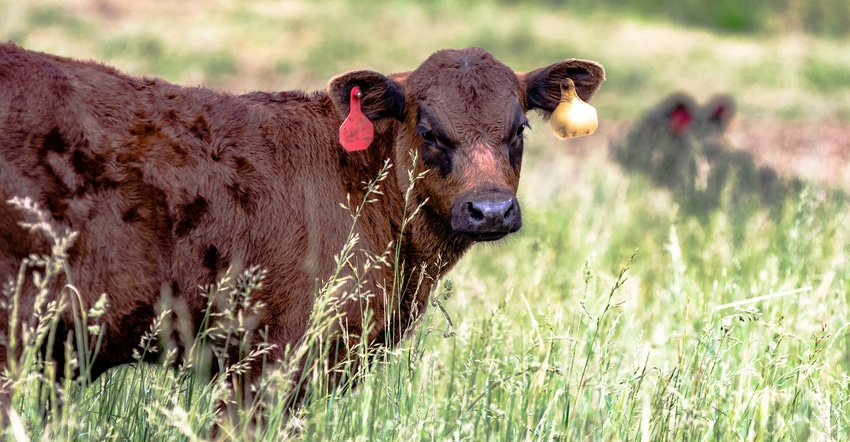April 15, 2022

Spring is the right time to start renovation projects on the farm. To safeguard animals and profitability, cattle producers should tackle those fescue pastures.
Nearly 98% of Missouri’s pastureland is tall fescue infected with an endophyte that can cause fescue toxicosis in grazing livestock, which leads to lower reproduction rates, milk production, gain and weaning weights. It can also causes health problems, including lameness and heat stress.
However, replacing toxic fescue with other forages eliminates animal exposure to the harmful endophyte.
Joe Horner, University of Missouri Extension agricultural economist, and Craig Roberts, MU Extension agronomist, answer seven common questions farmers ask when embarking on pasture renovation:
1. When should producers consider renovating pastures? Infection levels should be less than 10% — preferably zero — for dairy cattle and expensive horses. For beef cattle and small ruminants, endophyte levels should be less than 25%.
Pastures with at least 60% endophyte infection are highly toxic and should be replaced, Roberts says.
2. How do you know a pasture’s infection level? Farmers should collect fescue samples and send them to a lab for testing. Labs use a microscopic test or chemical procedures to determine the infection level.
Roberts encourages producers to choose a lab with experienced technicians and a proven track record of accurate results. MU researchers and Extension specialists send their samples to Agrinostics, a lab in Georgia that conducts the chemical test. Find the Agrinostics sampling methods at agrinostics.com.
3. What forages are best to replace infected fescue in pastures? After removing toxic fescue, producers often plant “novel” fescue varieties that are nontoxic to livestock, but tend to grow and persist as well as tall fescue infected with harmful endophytes. Other options include native warm-season grasses or perennial cool-season grasses, such as perennial ryegrass, orchardgrass or bromegrass.
4. How does the renovation process work? To renovate a pasture, spray, smother, then spray again.
Apply a herbicide in late spring or early summer, or you can wait until fall.
Plant a smother crop such as sudangrass or pearl millet in the summer or winter. After the smother crop matures, you can cut it as hay or graze it. Horner says producers can omit the smother crop if they apply herbicide twice and observe a waiting period between the two applications. However, planting a summer smother crop typically leads to faster payback.
Apply another round of herbicide before seeding a replacement forage.
The spray-smother-spray process takes one year. Animals can be turned in to lightly graze the renovated pasture in the spring following the renovation year.
“It’s not a simple and easy process, but real opportunities exist,” Horner says. “If producers are willing to put in time and make major changes, it’s a good long-term investment.”
5. How much does pasture renovation cost? When renovating pastures, the main input costs include the management commitment, chemicals, seed and fertilizer, Horner says. In addition, idling pastureland during the renovation period has its costs.
Horner and his MU Extension team estimate net renovation costs per acre to total $354 if using a summer smother crop, $497 if using a winter smother crop and $357 if using no smother crop. These estimates include preparing pastureland, planting novel fescue and idling land during the renovation process.
6. What are the benefits? Animals grazing on a renovated pasture typically experience improved reproduction rates and weaning weights. Plus, grazing a renovated pasture can reduce costs, including veterinarian fees. Horner says producers can anticipate annual returns of $198 per cow. Depending on the stocking rate, producers could also capture a 5% to 18% return on investment per year.
7. How long will a renovated pasture stay free from harmful endophytes? If producers properly maintain a renovated pasture, they can anticipate pastures to be free from harmful endophytes for about 20 years, Horner says. However, some renovated pastures have lasted longer.
More information about pasture renovation is available from the Alliance for Grassland Renewal at grasslandrenewal.org.
Source: University of Missouri Extension, which is solely responsible for the information provided and is wholly owned by the source. Informa Business Media and all its subsidiaries are not responsible for any of the content contained in this information asset.
You May Also Like




